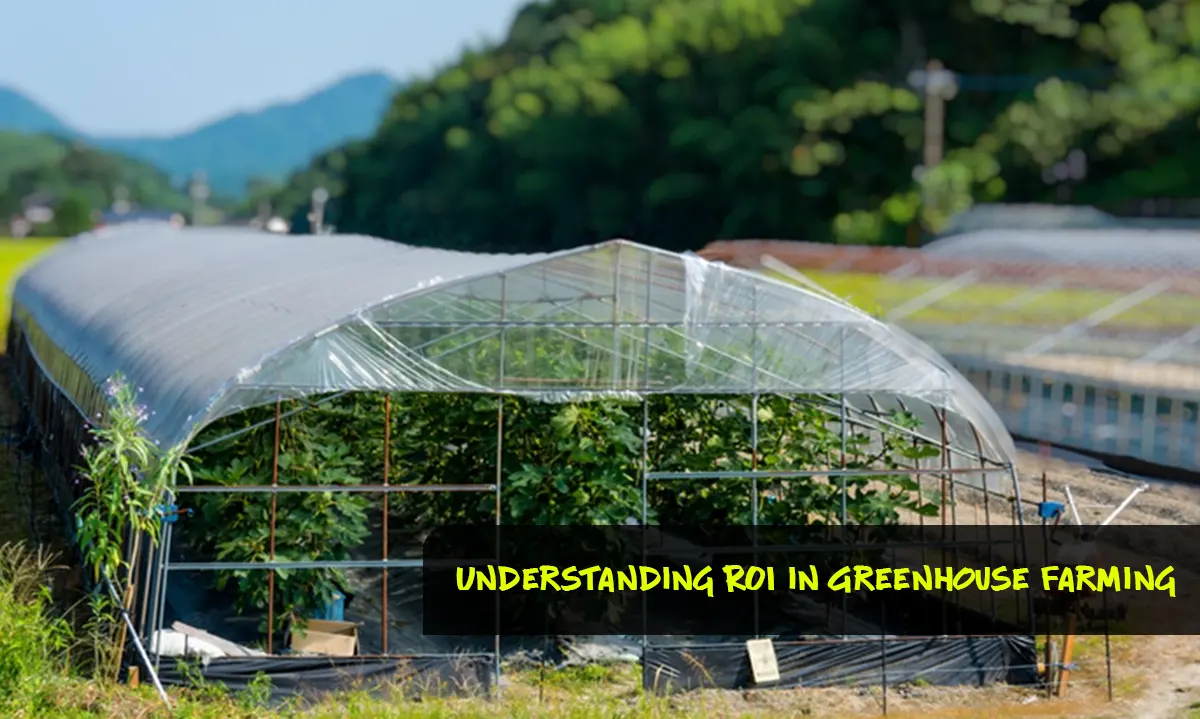The Economics of Greenhouse Farming: A Comprehensive Analysis of Costs, Profits, and Return on Investment

Greenhouse farming stands as a transformative force in contemporary agriculture, leveraging controlled environments to extend growing seasons and optimize crop conditions. Amid global challenges in food security and sustainability, a meticulous examination of the economics surrounding greenhouse farming becomes imperative. This blog meticulously explores the multifaceted dimensions of costs, profits, and return on investment (ROI) within the realm of greenhouse agriculture.
Understanding the Initial Investment
The journey into greenhouse farming begins with a pivotal consideration—the initial investment. According to industry data, the upfront costs for establishing a greenhouse can range from $20,000 to $50,000 per acre, including infrastructure components such as greenhouse structures, climate control systems, irrigation setups, and technology integration. However, this investment is not merely a financial commitment; it represents a foundation for long-term success. Quality yields throughout the year hinge on these initial expenditures, making them essential for evaluating the economic feasibility of greenhouse farming.
Operational Costs and Resource Efficiency
Operational costs constitute a critical aspect of greenhouse farming economics. The controlled environment within greenhouses facilitates resource-efficient practices, leading to a substantial impact on operational expenditures. According to a study by the Food and Agriculture Organization (FAO), greenhouse farming can reduce water usage by up to 90% compared to traditional open-field farming. Automated systems for temperature and humidity control, precision irrigation, and nutrient delivery optimize resource usage. Although operational costs may appear elevated initially, the ongoing savings in resources often result in a favorable economic outlook in the long run, contributing to the sustainability of greenhouse operations.
Crop Selection and Market Dynamics
The choice of crops plays a pivotal role in determining the profitability of greenhouse farming. According to market analysis, high-value crops such as tomatoes, peppers, and herbs are not only popular choices for greenhouse cultivation due to market demand but also enable farmers to command premium prices. A nuanced understanding of consumer preferences and market trends is essential for maximizing profits. Moreover, the versatility of greenhouse farming enables the cultivation of specialty or out-of-season crops, providing a competitive advantage in catering to markets that traditional farming methods might struggle to access.
Climate Resilience and Consistent Yields
Greenhouse farming addresses a longstanding vulnerability in traditional agriculture—dependence on unpredictable weather conditions. The controlled environment within greenhouses confers climate resilience, ensuring consistent yields and minimizing the risk of crop failure due to extreme weather events. According to a report by the Intergovernmental Panel on Climate Change (IPCC), extreme weather events are on the rise, emphasizing the need for climate-resilient farming practices. This reliability, particularly in the face of climate change, bolsters the economic viability of greenhouse farming by safeguarding against the uncertainties that traditional farming often contends with.
Return on Investment (ROI) and Profit Margins
The assessment of return on investment in greenhouse farming necessitates a comprehensive evaluation of both initial investment and ongoing operational costs against the profits generated. Despite the seemingly substantial initial investment, the steady yields, resource efficiency, and ability to command premium prices contribute to a favorable ROI over time. According to a study published in the Journal of Agricultural Science and Technology, the ROI for greenhouse farming can surpass that of traditional farming, particularly when cultivating high-value crops. The profit margins associated with greenhouse farming underscore the economic sustainability of greenhouse operations.
Challenges and Mitigation Strategies
Acknowledging challenges is crucial for a realistic understanding of greenhouse farming economics. Pest management, diseases, and the energy costs associated with maintaining optimal conditions are common concerns. However, the implementation of integrated pest management strategies, adoption of sustainable practices, and exploration of renewable energy sources can effectively mitigate these challenges, enhancing the overall economic outlook of greenhouse farming.
Environmental Sustainability and Consumer Preferences
The economic benefits of greenhouse farming extend to environmental sustainability, aligning with the growing consumer preference for eco-friendly and locally sourced products. Consumers are increasingly willing to pay a premium for produce that is not only fresh but also grown using sustainable practices. Greenhouse farming, with its reduced water usage, minimal pesticide reliance, and lower carbon footprint, aligns with these eco-conscious preferences. This alignment translates into market advantages, allowing greenhouse farmers to tap into consumer segments that prioritize both product quality and environmental responsibility.
In conclusion, the economics of greenhouse farming demand a nuanced perspective that encompasses initial investments, operational efficiency, crop selection, and market dynamics. Greenhouse farming emerges not just as a means of cultivation but as a holistic approach to sustainable and economically viable agriculture. As technology continues to advance, and awareness of sustainable farming practices grows, the economic benefits of greenhouse farming are poised to shape a resilient and prosperous agricultural landscape, defining the future of food production.
Latest Blog
JOIN OUR COMMUNITY !
Stay connected with Getfarms! Follow us on social media for the latest updates, exclusive offers, and a glimpse into the world of farmhouse living. Join our community today
















